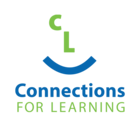Students in Grades 1-3 Virtual Learning don't just sit at the computer! Learning is designed to be hands-on, interactive and exploratory for students. Lessons are visually appealing, media-rich and engaging. Many of these lessons incorporate active learning opportunities, such as literacy and numeracy games, scavenger hunts, art projects or science experiments.
The teacher provides weekly learning expectations for each of their students. Students, working under the guidance of their parent/guardian, have flexibility in completing learning activities at a time that works best for them and their families. A suggested schedule is provided for those who would like more structure in their learning day.
Grades 1-3
Teacher Connection
Virtual Learning is teacher-led and parent-supported. The teacher does all of the planning, lesson design and assessment, and provides student feedback. Parents are encouraged to be actively engaged with supporting their children in their learning under the guidance of the teacher.
Staff can support and connect with students and families in the following ways:
- Technology (Schoology tools and email)
- Google Meets
- Phone
- Feedback on assignments
Families can choose to learn in either a semi-synchronous or asynchronous manner based on what best meets the student's and family's needs. The following chart outlines the difference between these two learning formats:
Semi-Synchronous Learning |
Asynchronous Learning |
|---|---|
|
In this learning format, teaching and learning may occur together simultaneously in real time (synchronously), or at separate times (asynchronously). When learning occurs asynchronously, students are given an assignment to complete on their own schedule with the support of their parent or guardian. |
In this learning format, students primarily learn on their own schedule with the support of their parent or guardian. Teacher support can be requested at any time; for live (synchronous) support, parents/guardians may book an appointment time. |
Examples:
|
Examples:
|
Synchronous Learning Commitment:
|
Synchronous Learning Commitment:
|
Asynchronous Learning Commitment:
|
Asynchronous Learning Commitment:
|
Courses
Virtual Learning delivers the full program of studies for each grade level including Language Arts, Math, Science, Social Studies and Health. A variety of options for Music, Art and Physical Education will be provided for students and families. Virtual Learning offers choice and flexibility within these subjects to capitalize on students’ passions and interests.
Curriculum overviews by grade level:
Enrichment Activities & Options
Your child will be able to choose from a variety of engaging enrichment activities that align with student interests and curriculum.
These activities may include:
- Virtual field trips
- STEAM challenges (Science, Technology, Engineering, Art & Math)
- Coding
- Virtual reality activities
- Other personalized projects
These activities will help your child further develop skills while exploring their interests and passions.
Program Class Times
- Virtual Learning Grades 1-3: 8:45am-3:30pm
How It Works
The following video demonstrates how Virtual Learning works for students in Grades 1-3:
Considerations
Do you want to be more involved in your child’s education?
Virtual Learning is a good choice for parents who want a higher level of involvement in their child’s education while still participating in a teacher-directed learning environment.
Will there be an adult available at home to support the student?
Virtual Learning requires at-home supervision and support from an adult, especially in the case of younger students.
A responsible adult will need support their Virtual Learner with:
- Using technology
- Completing learning activities
- Following the schedule
Are you able to provide the needed technology for each student enrolled in Virtual Learning?
Virtual Learning requires good, reliable internet access, and each student will need their own dedicated device equipped with a webcam to engage with their lessons.
Please see the Criteria & Considerations page for more information that will help you decide if CFL's Virtual Learning program is a good fit for you and your child.
